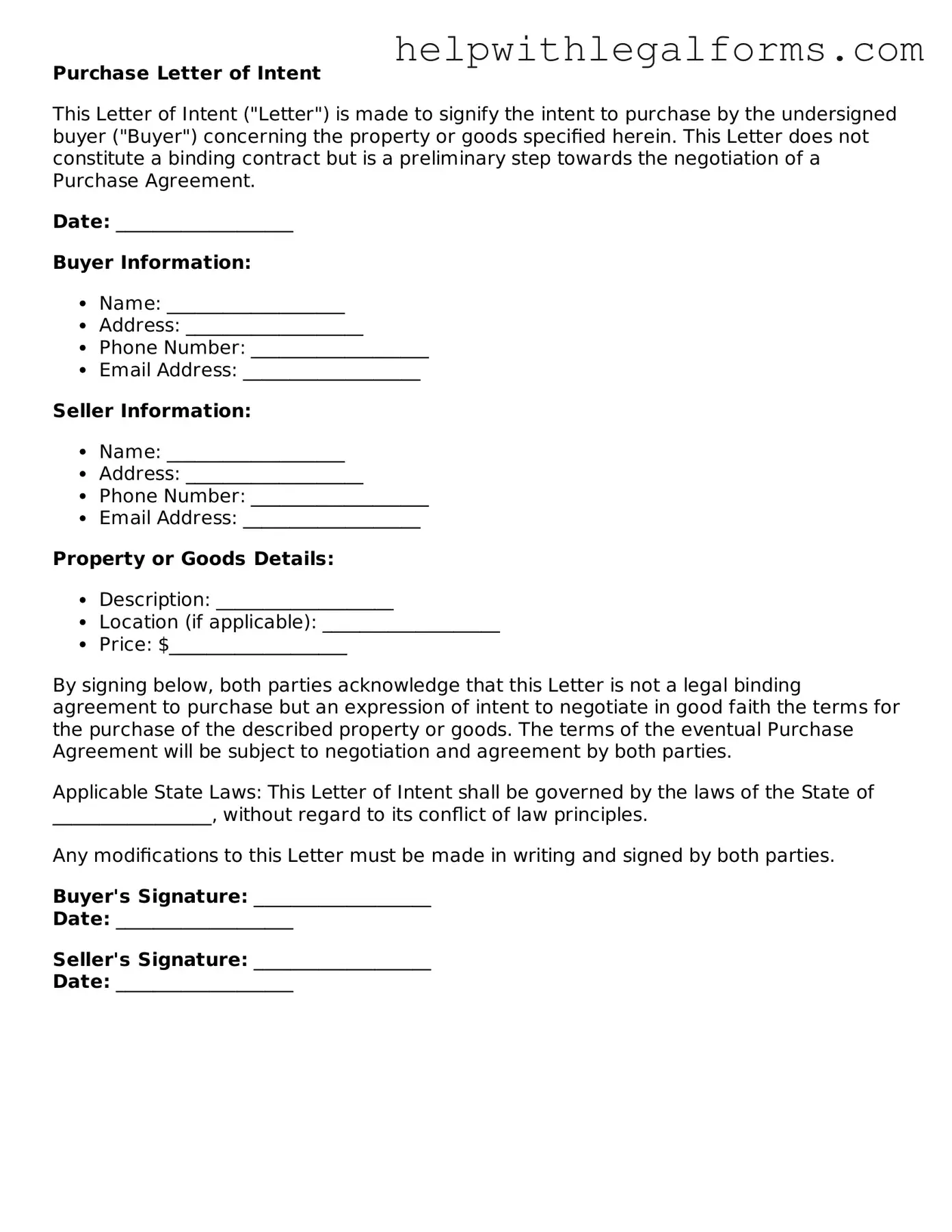What is a Purchase Letter of Intent?
A Purchase Letter of Intent is a document that outlines the preliminary agreements between a buyer and a seller before the final purchase agreement is signed. It serves as a roadmap for the transaction, detailing the basic terms, conditions, and the intended purchase price. This document is not legally binding in terms of the transaction itself but may contain provisions that are, such as confidentiality agreements.
Why use a Purchase Letter of Intent?
Using a Purchase Letter of Intent can help both parties clearly communicate their intentions and understandings regarding the purchase. It allows the buyer and seller to agree on key aspects of the deal before investing time and resources into due diligence and final negotiations. This can save time and help avoid misunderstandings or disputes later in the purchasing process.
What information should be included in a Purchase Letter of Intent?
Typically, a Purchase Letter of Intent should include details such as the identification of the buyer and seller, a description of the item or property being purchased, the proposed purchase price, payment terms, due diligence periods, any contingencies such as financing or inspections, and a timeline for moving to a binding purchase agreement.
Is a Purchase Letter of Intent legally binding?
Generally, the Purchase Letter of Intent itself is not legally binding in terms of obligating the parties to complete the transaction. However, it can include legally binding provisions, such as exclusivity clauses that prevent the seller from negotiating with other buyers for a specified period, or confidentiality agreements that protect the sensitive information shared during negotiations.
How do I draft a Purchase Letter of Intent?
To draft a Purchase Letter of Intent, start by listing the basic information about the transaction, including the names of the buyer and seller and the specifics of what is being bought and sold. Then, detail the key terms of the deal, such as the purchase price and terms, due diligence requirements, and any contingencies. Lastly, include any legally binding terms that both parties agree to adhere to during the negotiation process. Consulting with a legal professional can ensure the document accurately reflects the parties' intentions and complies with local laws.
Can a Purchase Letter of Intent be changed or terminated?
Yes, since a Purchase Letter of Intent is typically not a legally binding contract regarding the transaction, the parties can usually modify or terminate it by mutual agreement. If there are any binding provisions within the document, those must be adhered to unless both parties agree to amend or nullify them. It’s important to clearly specify the process for making changes or terminating the agreement within the document itself.
What happens after a Purchase Letter of Intent is signed?
After a Purchase Letter of Intent is signed, the buyer usually conducts due diligence to verify the condition and value of the property being purchased. During this period, both parties may negotiate the final terms of the purchase agreement based on findings or changes in circumstances. If everything proceeds as planned, the next step is drafting and signing the binding purchase agreement, at which point the transaction moves towards closing.
How does a Purchase Letter of Intent affect negotiations?
A Purchase Letter of Intent can streamline negotiations by setting the framework for the deal. It puts in writing what both parties have agreed upon in principle, reducing areas of potential conflict by clarifying the terms and expectations from the outset. However, it’s also a negotiation tool that can be used to lock in certain terms early in the process, providing a foundation upon which to build the final agreement.
Who should use a Purchase Letter of Intent?
Both buyers and sellers in a variety of transactions can benefit from using a Purchase Letter of Intent. It's commonly used in real estate deals, business acquisitions, and large personal property purchases. This document is especially useful in complex transactions that require extensive negotiations and due diligence before a final purchase agreement can be signed.
